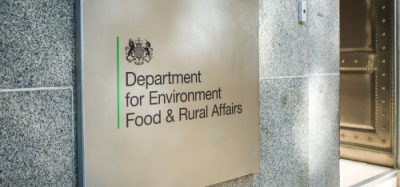5 future food safety issues to be aware of
- Like
- Digg
- Del
- Tumblr
- VKontakte
- Buffer
- Love This
- Odnoklassniki
- Meneame
- Blogger
- Amazon
- Yahoo Mail
- Gmail
- AOL
- Newsvine
- HackerNews
- Evernote
- MySpace
- Mail.ru
- Viadeo
- Line
- Comments
- Yummly
- SMS
- Viber
- Telegram
- Subscribe
- Skype
- Facebook Messenger
- Kakao
- LiveJournal
- Yammer
- Edgar
- Fintel
- Mix
- Instapaper
- Copy Link
Posted: 8 June 2021 | Chris Elliott | 2 comments
Professor Chris Elliott makes five predictions around the most significant issues the food sector will face in the coming years.


As part of this discussion, I was invited to give my views on what I believe will be the main food safety issues going forward, and what industries and regulators should concentrate on in order to prepare for the upcoming challenges.
I focused on five areas during my talk and was met with a lot of discussion and debate, so considered it apt to make it the focus for this week’s article and hopefully it will generate the same impact.
-
Climate change
Top of my list is climate change, and I can’t imagine this comes as a surprise, the FAO have already published a very good report on why this will be an issue of significance for our sector. We are already seeing pests appear in larger numbers in some parts of the world and moving to new locations due to the warming of the planet. This is, in turn, driving the use of more pesticides to try and prevent crop losses. We are seeing a higher prevalence of mycotoxins, particularly in crops in the northern hemisphere as the fungi that produces these are finding the climatic conditions ideal to grow in, and similar trends are being seen with heightened microbial risks, such as foodborne pathogens.
-
Fresh water
Of course, linked to climate change is the availability of fresh water. Globally, we are seen more and more places struggling to cope with the growing demands due to rising populations and therefore, an increased demand on food production.
Around 70 percent of all our fresh water is used in agriculture. To meet the demands, we’re seeing more agriculture systems using recycled water. But while some measures have been put in place in the developed world to try and ensure this is achieved safely, this is less commonplace in the developing world. The potential for pathogens to be sprayed onto crops and lead to foodborne illness is a real threat and leads to concerns over antimicrobial resistance.
-
A sustainable food system
Perhaps less thought about is the drive for a more sustainable food system and the likely prospective for a number of unintended consequences linked to food safety. Two specific examples include the drive to reduce food waste and single use plastics.
In terms of lowering food waste, I can see the potential for less safe food to be consumed unless extremely stringent measures are put in place. As targets are set for companies to report reduced waste, I believe there will be pressures to put food into supply chains that is close to or at its expiry dates.
We all acknowledge and agree that single use plastics have a damaging impact on the environment, but have we really considered the unintended consequences of their alternatives? Will other materials offer the same pathogen protection; will these alternatives have chemicals present that can migrate into our food and cause long term health issues? Before any alternative is branded the gold standard, a safety assessment must be conducted.
-
Plant proteins
Plant proteins may seem like a peculiar choice for this list, but I have real reservations that many of these proteins will be consumed after substantial processing (extrusion) and the opportunity for this to lead to allergenic reactions. Allow me to elaborate: pea protein, for example, is now being widely used in many products and has been linked to increasing reports of allergic reactions. Peas are genetically similar to peanuts and my fear is that the extrusion processes being used are causing changes in the pea proteins so that they more closely resemble the peanut proteins that can cause an allergic reaction.
-
Fraud
Unfortunately, I can only see criminal activity within the global food system escalating. Shortages of some food commodities and ingredients due to crop failures are already occurring and this will only get worse. Such shortages are ripe for exploitation by criminals and increased demand for organic and sustainable food will be, in my opinion, another major driver for fraud.
While it might seem that I have my ‘Doctor Doom’ hat on as I write this column, it’s of vital importance that we understand the challenges ahead and can act collectively to mitigate against such future food risks.
Only by preparing today will we be able to provide the world’s growing population with safe, authentic and sustainable food.
Related topics
Food Fraud, Food Safety, Food Waste, Pathogens, Pesticides, Plant based, Supply chain, Sustainability, Water










Very interesting article. I may say that you are not wearing Dr. Doom hat, you are wearing Dr. Real hat. As you metion in order to succed in any activity we must act now for things that could happen in the future, that is be more preventive that reactive. That is why we do risk assessment and foresee any Hazard and mitigate it. But in order to foresee this Hazzards we need people like you that can help us identify this problems in advance. Thank you and have a great Food Safety month. Mario from Guadalajara, Jalisco.
Hi,
Really informative and research base discuss food safety issues. But sir here i request please a littel explanation on extrusion. How extrusion cause allergenic. Simply during extrusion which changes occurring and make pea protein allerganic for the end consumer.
Regards
Zabiullah